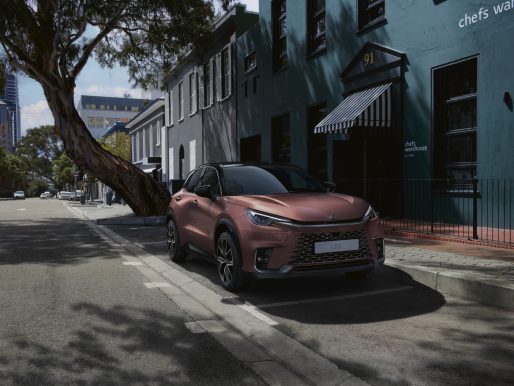Our journey of architectural discovery across London in the Lexus NX has already taken us to the Saw Swee Hock student centre in Aldwych and the City of London Information Centre in St. Paul’s Churchyard.
Both buildings echoed the angular aesthetic and environmental qualities of our luxury compact SUV, and helped us to visualise today what the sympathetically constructed city of tomorrow might look like. For our third stop-off, we see those qualities exemplified in one of the world’s most sustainable buildings. We also return to our use of cinemagraph images to animate the visuals with subtle motion.
The Crystal – a sustainable cities initiative by Siemens
Located on the regenerated waterfront of London’s Royal Victoria Docks, the Crystal building delivers a striking contrast to a surrounding skyline that includes memorable silhouettes such as Canary Wharf, the O2 Arena and Emirates Air Line cable car service.
Commissioned and run by German engineering giant Siemens, the Crystal has a three-fold purpose. First of all, it is a showcase for sustainable construction and technologies within an urban environment. The all-glass building also plays host to the world’s largest exhibition focused on urban sustainability – over 250,000 people have visited since its opening in September 2013 – and concludes its curriculum vitae as an event and conference venue.
The Crystal was designed by award-winning architectural company WilkinsonEyre, using the multi-faceted surface of a crystal to define the building’s outer shape. Just as the Lexus NX employs complex angular surfaces to create space for occupants, the Crystal’s glazed envelope provides the eye-catching wrapping for a sequence of practical internal spaces that include a 270-seat auditorium.
But there was more to the use of glass as a primary construction medium than in underlining the association to a jewel. WilkinsonEyre comments that “the all-glass building challenges conventional ideas on sustainability, championing the use of advanced technology to minimise energy use.”
It does this by using six different types of triple-insulated glass in the cladding, each with varying levels of transparency to balance solar gain with outward visibility. Reflective glass is used on the backward-leaning facets to reflect the sun, while transparent glass is used on the inner faces angled towards the ground. Similarly, the Lexus NX adopts strategic use of privacy glass for the comfort of rear passengers, and in the case of the windscreen, employs the bonded glass as a load-bearing element to increase the body’s resistance to flexing.
The harnessing of solar power is just one of the ways in which the Crystal building generates its own energy. Ground source heat pumps supply virtually all of the building’s heating and most of its cooling, a system that works by pumping rainwater harvested from the roof through a 17km long network of pipes that loop as deep as 150 metres into the ground.
Through its harnessing and recovery of natural heat sources, the Crystal receives no heating bill yet remains at a comfortable working temperature. Similarly, while the Lexus NX 300h is reliant on fossil fuel to run its petrol engine, it is also self-sufficient in that the electricity needed to power the hybrid system is generated on board. Which means that the car can remain off-grid, never needing to be plugged into the mains to be charged.
And just as the Crystal recovers some 60 per cent of its heat energy through thermal wheels (discs that absorb heat from outgoing air to warm the incoming air stream), so the NX 300h captures a vital supply of additional energy through regenerative braking – energy that most vehicles simply waste through heat.
The efficient day-to-day running of the Crystal is handled by a sophisticated management system, which allows every element of this all-electric building to be monitored and fine-tuned to minimise energy use. Analysed by 84 power meters and visualised on-screen in the exhibition hall, the data is refreshed every 15 minutes.
As the one in control of the vehicle, Lexus gives the driver access to up to three informative screens: a full-colour LCD multi-information display in the centre of the instrument cluster, and a 6.2-inch head-up display (NX 300h Premier model only). Each projects a range of information live to the driver in order to monitor his or her management of the available power sources at any moment.
With exemplary sustainability credentials, the Crystal consumes 42.6 per cent less energy than a comparable office building in the UK and produces 71.1 per cent fewer greenhouse gas emissions. In view of these figures, it has achieved BREEAM Outstanding accreditation and LEED Platinum accreditation – the most stringent standards for sustainable design and construction.
Similarly, the responsible engineering of the Lexus Hybrid Drive unit in this Lexus NX 300h makes it one of the cleanest and most efficient models in the SUV class. What’s more, the fact that it is built under the keen-eyed supervision of Lexus’s renowned Takumi master craftsmen at the Kyushu plant means the quality of construction and a long service life is guaranteed.
Read more: Striking angles of Lexus NX and architecture – part 1
Read more: Striking angles of Lexus NX and architecture – part 2




